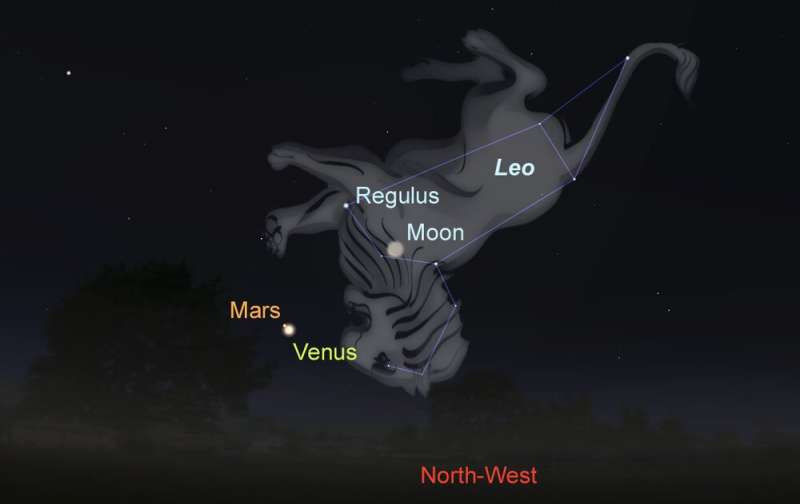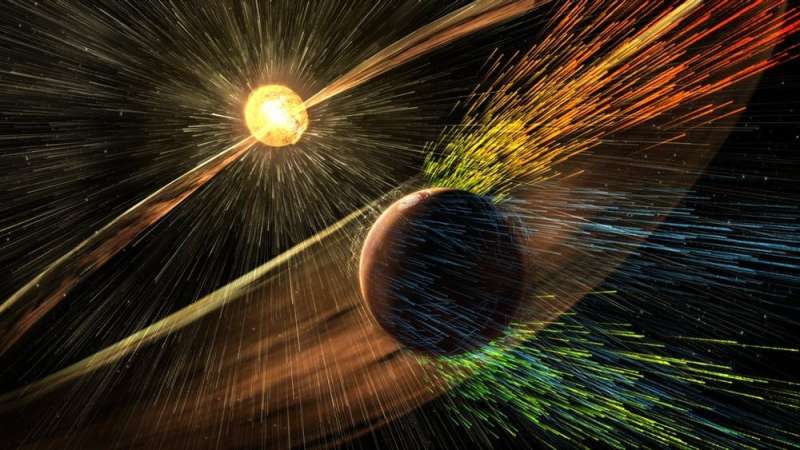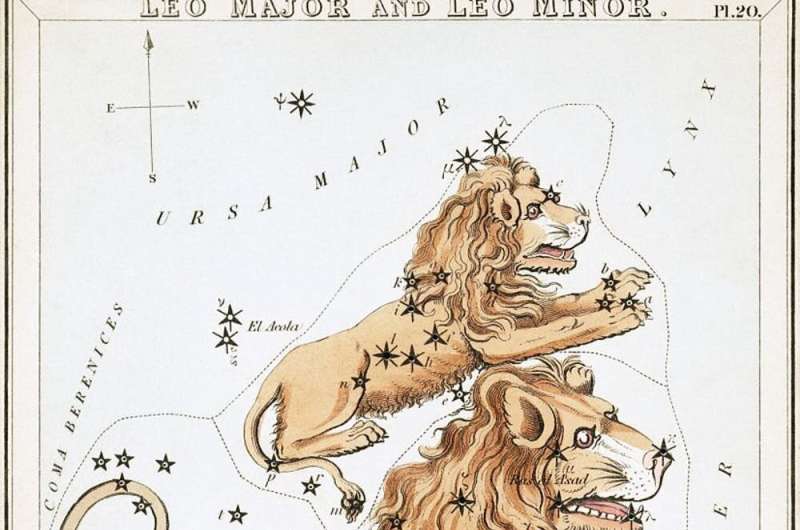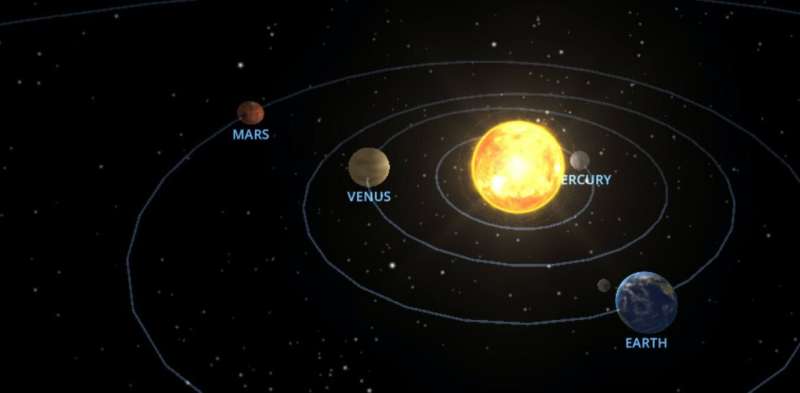On Tuesday evening, the pair will appear so close together, they will fit within the field of view of a telescope or pair of binoculars. Yet in reality, they are millions of kilometers apart—Venus will be around 210 million km from Earth and Mars a more distant 370 million km.

The eyes of Baayami
Aboriginal Australians have witnessed close pairings of Venus and Mars for thousands of years and for the Euahlayi people of northern New South Wales it has particular significance.
This cosmic pairing represents the eyes of Baayami, the supreme creation ancestor. One Euahlayi elder says: "During the day, the eyes of Maliyan (the eaglehawk) are the eyes of Baayami. During the night, Maliyan's eyes are Venus and Mars, which become the eyes of Baayami. Because one is red (Mars), and one is blue and green (Venus)."
Euahlayi people would have seen Venus flash green, which is an interesting phenomenon that occurs as Venus is setting and its bright light is scattered by the Earth's atmosphere. When it does this it also twinkles. Elders describe the planet as an old man who told a crude joke and is animatedly laughing to himself.
The event is also linked to ceremony. Euahlayi people follow part of a Songline mapped out in the stars to travel to a place near Quilpie, 430 km northwest of Goodooga in western Queensland. Bringing with them a green and blue opal, representing Venus, they meet the local Maranganji people, who provide a red stone signifying Mars.

The original Goldilocks planets
Venus and Mars are Earth's closest neighbors and yet they evolved so differently to our planet—one too hot and the other too cold.
Billions of years ago, it's likely this trio of rocky planets all had oceans covering their surfaces. But on our two neighbors, those oceans have dried up.
For Venus, new modeling suggests that volcanic activity could have been the likely cause. Over a short period of time, so much carbon dioxide was pumped into the atmosphere that it could not be re-absorbed by the rocks. This triggered a runaway greenhouse effect and turned Venus into the hot, hellish world we know today.
For Mars it's a different story. Back when water was flowing on Mars, the planet was much warmer because its atmosphere was more substantial. However over billions of years, the solar wind made up of particles from the Sun has blown away much of that atmosphere. Mars doesn't have a magnetic field like Earth to deflect the solar wind and the planet's low gravity makes it easier for the gases to escape.
The atmosphere is now so thin that liquid water can no longer exist on the Martian surface. Some water may have escaped along with the atmosphere, but the majority seems to be locked up in the Martian rocks and frozen underground.

Leo, the lion
As you observe the planets and in particular the Moon, you may notice an arrangement of stars that looks like an upside-down question mark. That's the mane of Leo, the lion.
Leo is one of the original Greek constellations and also one of the 12 constellations of the zodiac. The zodiac is a band of constellations that maps the path of the Sun (known as the ecliptic), and therefore the Moon and planets can be found passing through these constellations throughout the year.
From our vantage point in the southern hemisphere, Leo appears upside-down. In fact, all the constellations, and even the Moon, are viewed "upside-down," because we live on a sphere.
The brightest star in the constellation of Leo is Regulus, often called the "little king."
In Wardaman astronomy (from west of Katherine, Northern Territory), Regulus is called Moroborronggo. Uncle Yidumduma Bill Harney describes it as the creation dog. Right now, we are seeing Moroborronggo setting in the west, but back in April when the star is seen rising in the east at sunset, it brings special significance as it marks the start of the Wardaman calendar, when the monsoon rains begin to ease.
Explore further
This article is republished from The Conversation under a Creative Commons license. Read the original article.![]()



